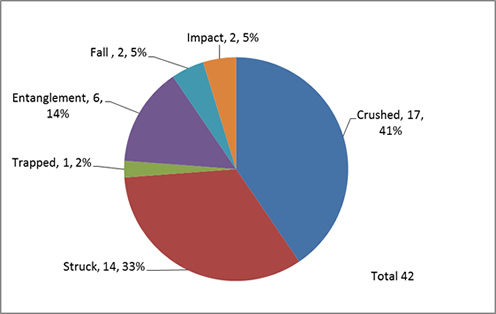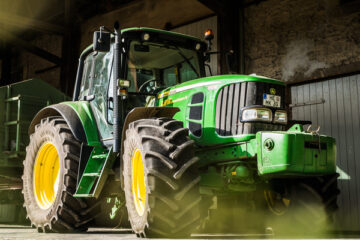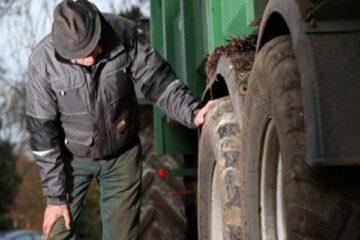Farm vehicles and machinery are the main causes of fatalities on the farm. The combination of farm vehicles (30%) and machinery (20%) represents half of all farm fatalities spanning over the period of the last ten years.
Accidents can happen for the machine operator and bystanders. While the manufacturers of farm machinery and vehicles take every measure to ensure their products are safe this does not mean hazards are 100% removed. A large proportion of accidents occur as a result of human error. A farmer operating a vehicle might not have payed enough attention, kept the machine in the right condition or took a shortcut.
Deaths due to Tractors and Farm Vehicles 2008-2017 (30% of total Fatals)

There are several specific areas related to machinery and vehicles that can cause serious injury, the loss of a limb and even death. These are:
- Being entangled (PTO)
- Being crushed under a machine part
- Being caught in a machine mechanism
- Being struck by a trailer or machine
- Being crushed between a vehicle and a machine
- Being struck by a flying machine-object
A high percentage of farm deaths are a direct result of being trapped or caught under a machine part at 67%. The correct management and maintenance of tractors and other machinery is vital in order to prevent fatalities.
Deaths due to Machinery 2008-2017 (20% of total Fatals)

The following is advice which can be found on the Department of Agriculture, Food and the Marine’s website.
When using tractors/vehicles:
- Tractor maintenance: always ensure that the vehicle is in a safe working condition before use. If a tractor needs repair, do not use it until it has been fixed.
- Hydraulic system: always examine hydraulic pipes before using hydraulic equipment. Repair or replace damaged pipes or couplings before use.
- Using vehicles on public roads: ensure that all mirrors, indicators, lights and wipers are in working order. The vehicle should comply with the requirements of the Road Traffic Act.
- Vehicle parking: all vehicles vary in operating procedures, however, when parking; avoid parking on slopes, apply the handbrake, stop the engine and leave the fuel-control stop in the shut-off position, lower hydraulic equipment to the ground and remove the key.
- Safety cabs: ensure the safety cab is kept in good condition at all time.
- Passengers: do not carry passengers unless there is an authorised passenger seat for each one. Where available, seatbelts must be worn.
- Overturning: always take great care to ensure that the vehicle does not overturn. Assess the slope and ground conditions before doing machinery work on slopes. If a tractor is about to overturn, do not attempt to jump clear, stay in the cab and hold onto the steering wheel.
- Trailer braking: ensure that both the tractor and trailer have effective, working brakes.



